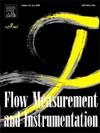Study on the dynamic characteristics of CDC valves based on a thermo-fluid-solid coupling model
IF 2.3
3区 工程技术
Q2 ENGINEERING, MECHANICAL
引用次数: 0
Abstract
CDC valve is a multi-physics coupling system, where flow field simulation accuracy is crucial for dynamic characteristic analysis. This study develops a CFD-based thermo-fluid-structure coupling model, integrating interactions among flow, thermal, and stress fields, with experimental validation of its accuracy. Results show that the CDC valve reaches peak flow at 50 °C but exhibits a declining trend at higher temperatures. Under 30 °C and 6 MPa conditions, the maximum error between experimental and simulated flow rates is 7.46 %, demonstrating model reliability. This research reveals the dynamic behavior of the CDC valve under high-temperature and high-pressure conditions, providing theoretical support for optimized design and expanding multi-physics modeling of complex hydraulic components.
基于热-流-固耦合模型的CDC阀动态特性研究
CDC阀是一个多物理场耦合系统,流场仿真精度对其动态特性分析至关重要。本研究建立了基于cfd的热-流-固耦合模型,整合了流场、热场和应力场之间的相互作用,并对其准确性进行了实验验证。结果表明,CDC阀在50℃时流量达到峰值,在较高温度下流量呈下降趋势。在30℃、6 MPa工况下,实验流量与仿真流量的最大误差为7.46%,证明了模型的可靠性。该研究揭示了CDC阀在高温高压工况下的动态特性,为复杂液压元件的优化设计和扩展多物理场建模提供了理论支持。
本文章由计算机程序翻译,如有差异,请以英文原文为准。
求助全文
约1分钟内获得全文
求助全文
来源期刊

Flow Measurement and Instrumentation
工程技术-工程:机械
CiteScore
4.30
自引率
13.60%
发文量
123
审稿时长
6 months
期刊介绍:
Flow Measurement and Instrumentation is dedicated to disseminating the latest research results on all aspects of flow measurement, in both closed conduits and open channels. The design of flow measurement systems involves a wide variety of multidisciplinary activities including modelling the flow sensor, the fluid flow and the sensor/fluid interactions through the use of computation techniques; the development of advanced transducer systems and their associated signal processing and the laboratory and field assessment of the overall system under ideal and disturbed conditions.
FMI is the essential forum for critical information exchange, and contributions are particularly encouraged in the following areas of interest:
Modelling: the application of mathematical and computational modelling to the interaction of fluid dynamics with flowmeters, including flowmeter behaviour, improved flowmeter design and installation problems. Application of CAD/CAE techniques to flowmeter modelling are eligible.
Design and development: the detailed design of the flowmeter head and/or signal processing aspects of novel flowmeters. Emphasis is given to papers identifying new sensor configurations, multisensor flow measurement systems, non-intrusive flow metering techniques and the application of microelectronic techniques in smart or intelligent systems.
Calibration techniques: including descriptions of new or existing calibration facilities and techniques, calibration data from different flowmeter types, and calibration intercomparison data from different laboratories.
Installation effect data: dealing with the effects of non-ideal flow conditions on flowmeters. Papers combining a theoretical understanding of flowmeter behaviour with experimental work are particularly welcome.
 求助内容:
求助内容: 应助结果提醒方式:
应助结果提醒方式:


